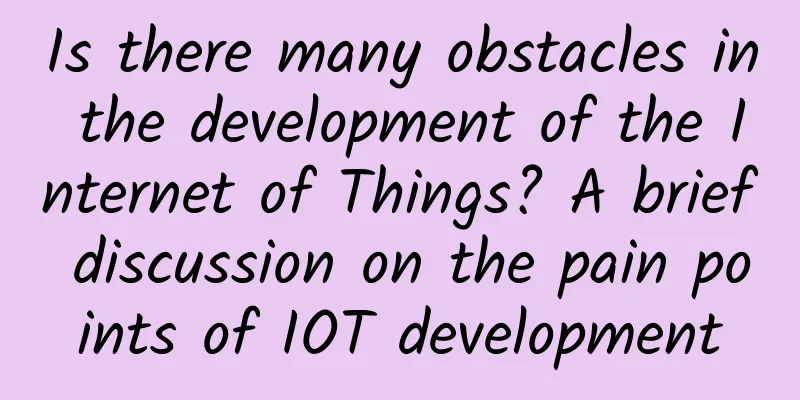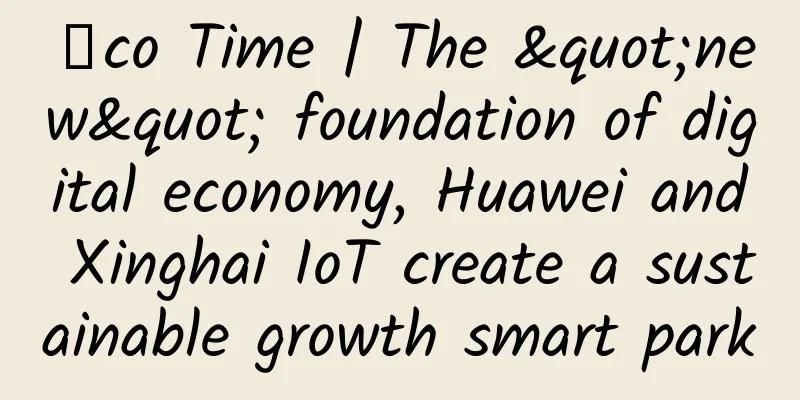Is there many obstacles in the development of the Internet of Things? A brief discussion on the pain points of IOT development

|
In modern society, the Internet of Things, which is always connected, has broken down the barriers to innovation and communication. Living in a technological age, today's technology enables us to communicate without interruption and without boundaries. Gartner predicts that there will be 8.4 billion connected devices worldwide by 2017, including consumer products such as smart TVs and in-car entertainment systems, and industrial applications that can predict factory maintenance needs or estimate the most efficient way to distribute electricity in power plants. These applications can connect and interact on the same platform, bringing opportunities for enterprises to generate additional revenue.
However, especially from an industrial perspective, the adoption of these new platforms has been slow due to the difficulty of implementing connectivity in a comprehensive manner across a wide range of access points, such as customers, partners, and employees around the world. At the same time, cloud-based mobile devices can optimize connectivity to each access point, and companies tend to prioritize this development, adding another layer of complexity to the adoption of new platforms. Take the energy industry as an example. Simply put, the infrastructure of too many organizations in this industry is old and outdated. In many countries, there is an urgent need for digital upgrades in the energy industry. In fact, the current grid infrastructure in many areas is outdated. It is time for utilities to replace "antique" assets with smart operations that can achieve digital communications. It is time for the energy industry to regard data as its new currency. The bigger challenge is that the various technology options supporting the Internet of Things are still relatively fragmented, with different standards and involving different applications, making the concept of the Internet of Things seem confusing. Unlike network interconnection, it is more like an archipelago with many islands. In fact, Forrester once said that this year, in order to support the company's Internet of Things devices, its design team needs to find up to 19 wireless connection options and protocols, and the enterprise needs to spend a lot of effort to introduce them. For example, suppose you are going to a meeting on your calendar. You will use the GPS on your phone to navigate to the meeting place, but the current parking application will not tell you that it actually takes 20 minutes to drive to the meeting place, and you have to park your car in a parking lot farther away, so you must leave now. Although Google Maps knows the driving time, it cannot tell you the parking situation, so users need applications other than Google Maps. Taking industry as an example, returning to the energy example discussed earlier, new technologies (including sensors and digital control systems) use real-time data to keep power plants running smoothly and efficiently, achieving higher production capacity while providing valuable forward-looking predictions that make operations more reliable and efficient. Technology makes different applications synchronized, and the market demand for multiple applications will begin to change. With the popularization of cloud-based M2M device management systems, we believe that the demand for multiple applications has begun to decrease. Therefore, mobile network operators are currently willing to give up becoming the main service contractor and supplier, and instead choose to cooperate with M2M/IoT platform suppliers and third-party system integrators to realize their M2M/IoT strategies. The growth brought by the Internet of Things will have an impact on various industries in different countries. For example, the automotive industry no longer has to consider location factors and has the opportunity to provide a borderless and unrestricted connected car experience. Transportation and logistics companies will be able to achieve new cost efficiencies in their business. Borderless connectivity allows airline crews to stay connected to the corporate network regardless of their location. Connectivity between aircraft can help diagnose problems and service, potentially identifying aircraft issues before they become operational problems. The Internet of Things and mobile devices are creating an integrated digital technology platform that will ultimately create a “one-stop shop” for consumers and businesses. While we still face challenges, it is clear that we are moving toward digital platforms that enable this convergence for consumers and businesses around the world in developed and emerging markets. |
>>: Yunfan Accelerator CEO Tong Yongyue resigns, founder Wang Xijie takes over and sets sail again
Recommend
Let’s talk about the Vrrp protocol?
[[374759]] This article is reprinted from the WeC...
What is Software Development Cloud?
Software Development Cloud Software Development C...
Inspur HCM Cloud is officially launched, ushering in the era of professional human resource management in the cloud
[51CTO.com original article] The socialization, i...
Riverbed Launches Two New Visibility Solutions to Enable 360-degree View of Enterprise IT
[51CTO.com original article] Riverbed recently an...
The three major operators are about to adjust, and the low standard of 5G tariffs is coming, and both new and old users have opportunities
2019 can be said to be the first year of 5G base ...
The bitterness and helplessness of the three major operators due to repeated delays in 5G packages
In June, the three major operators who obtained 5...
Why is Low Power WAN the First Choice for IoT Applications?
Enterprises looking to launch and expand IoT appl...
LOCVPS New Year Special: 2GB memory package in Hong Kong/Japan data center starting from 252 yuan/year
LOCVPS (Global Cloud) launched its first promotio...
spinservers: 10Gbps bandwidth high-end server starting at $89 per month, Dallas/San Jose data center
spinservers is a business that mainly provides ov...
Advantages of Web 3.0 in Business Models
Web 3.0 is the upcoming third generation of the i...
Look up to the sky with 5G, keep your feet on the ground with 4G
[[348928]] October 28 news: Although 5G has alrea...
[Black Friday] LiteServer: 60% off VPS in the Netherlands, large hard drive VPS/large traffic VPS monthly payment starting from 2.4 euros
LiteServer's Black Friday promotion lasts unt...
Wi-Fi Alliance announces Wi-Fi 6 as new logo
Nowadays, Wi-Fi has become an indispensable part ...
The past and present of IPv6 and the comparison with IPv4
IPv6 is the abbreviation of Internet Protocol Ver...
To promote the migration of 2G/3G to NB-IoT/Cat1, the Ministry of Industry and Information Technology released the first important document on the Internet of Things in 2020!
Yesterday, the General Office of the Ministry of ...

![[New Year's Day] RackNerd: $11.49/year-1GB/21G SSD/1.5TB@1Gpbs/San Jose & Los Angeles & Seattle data centers](/upload/images/67cabca069250.webp)







